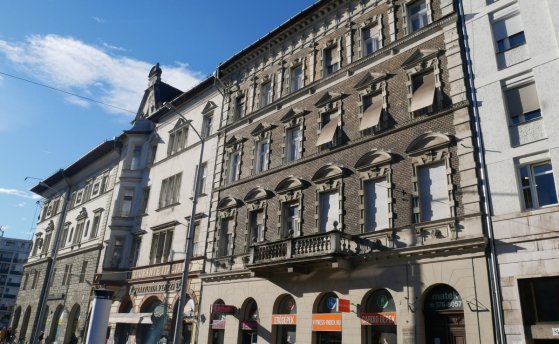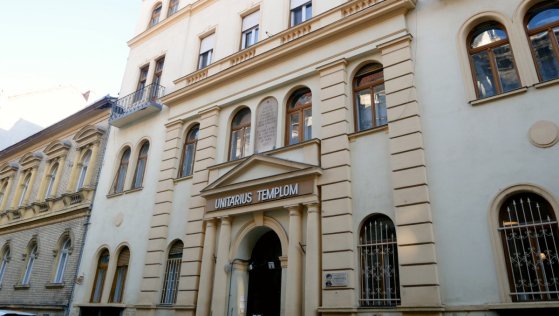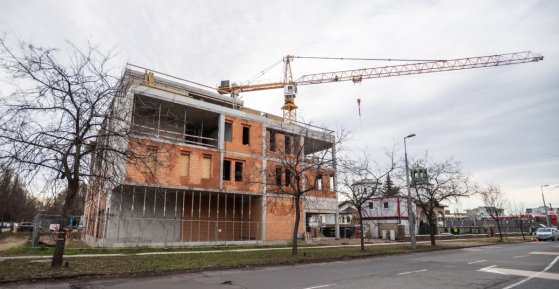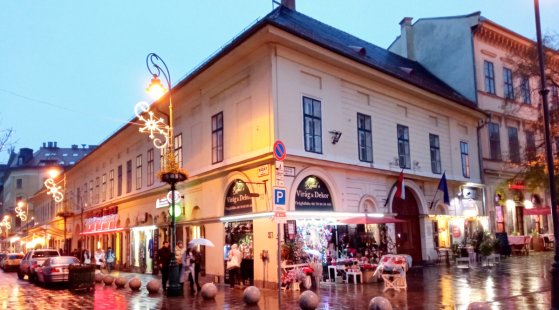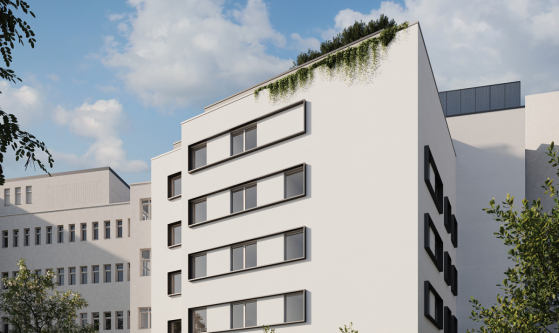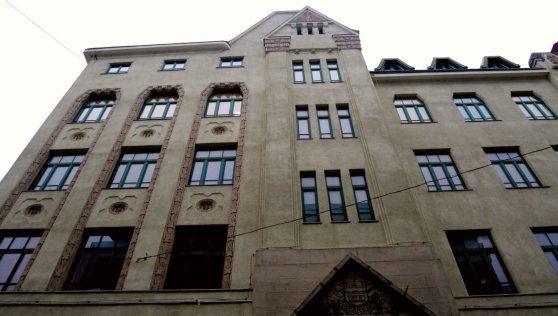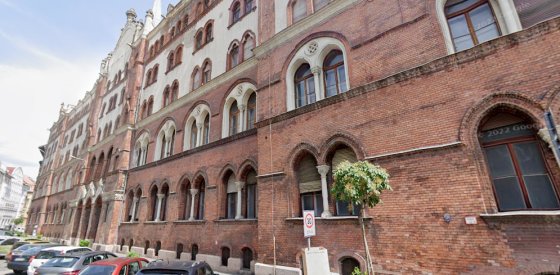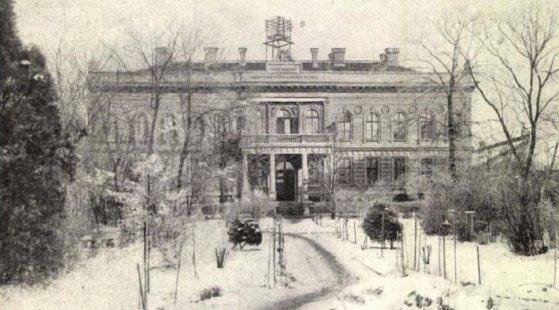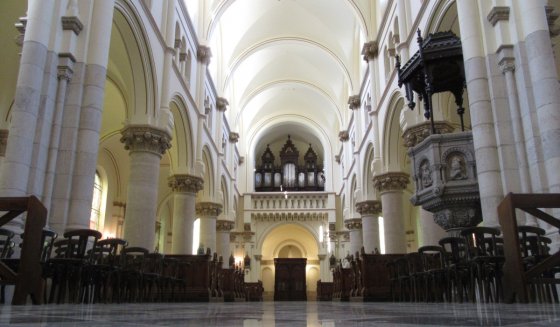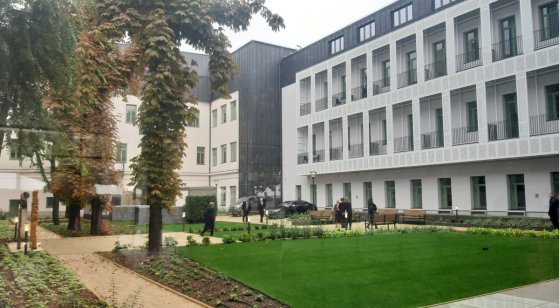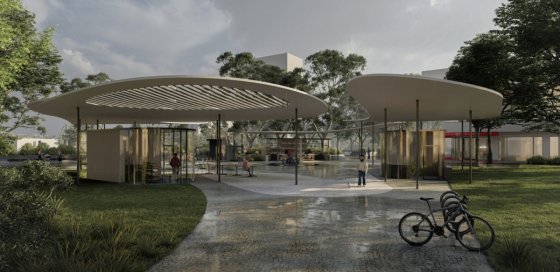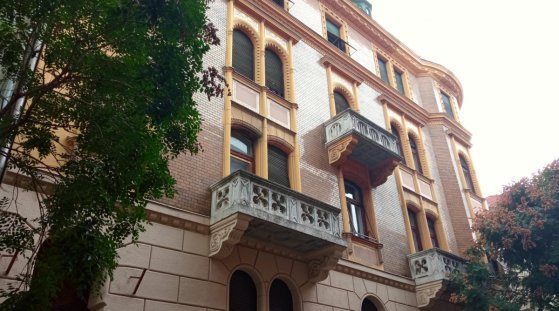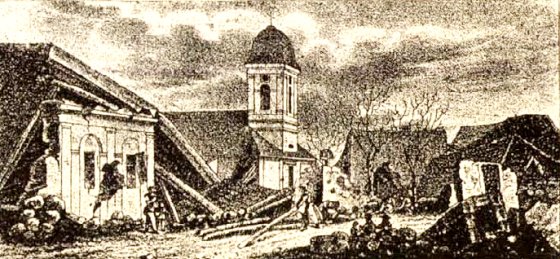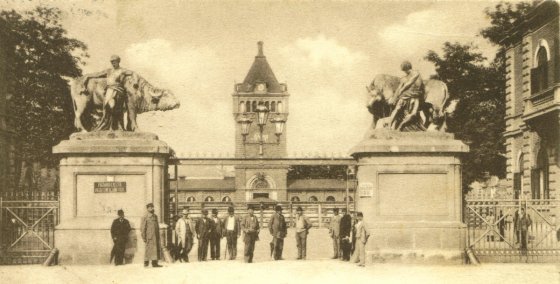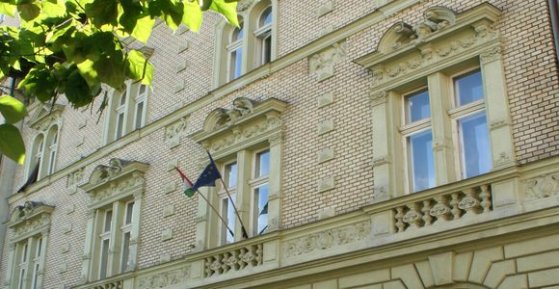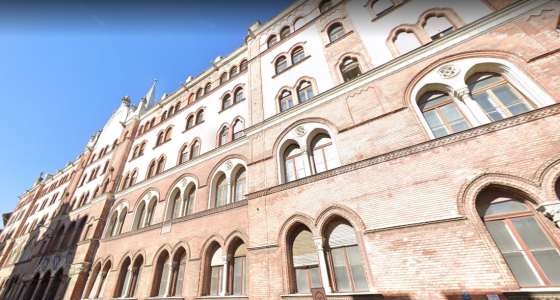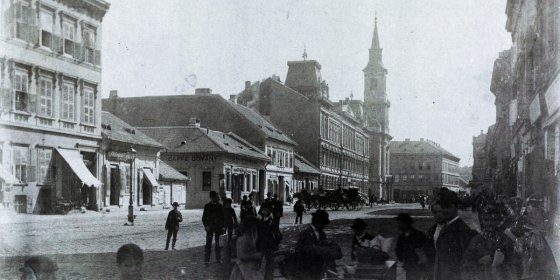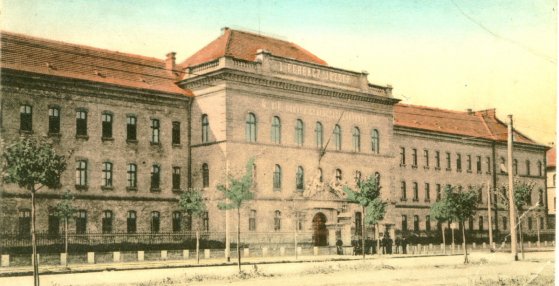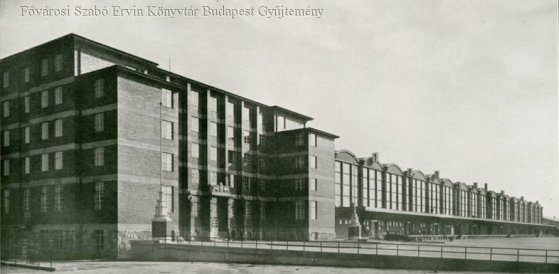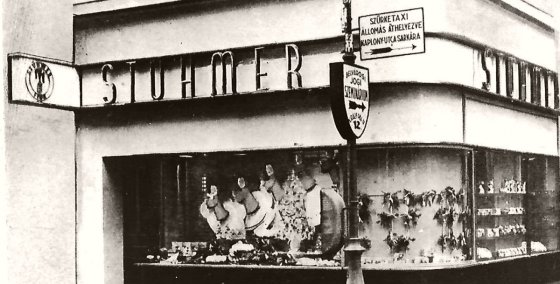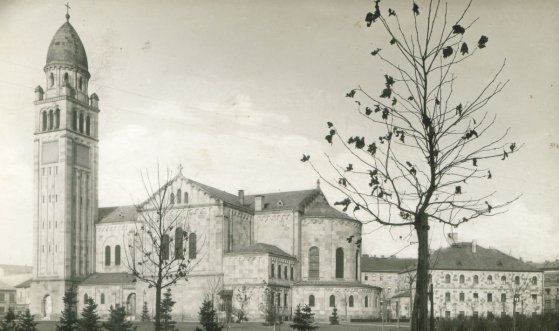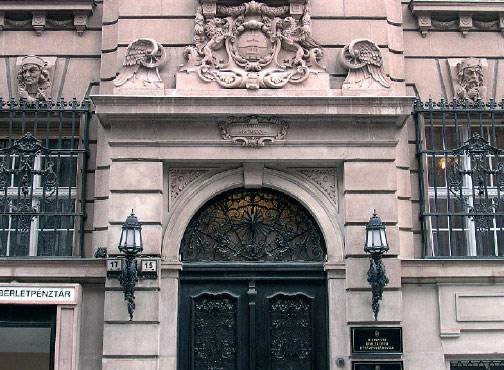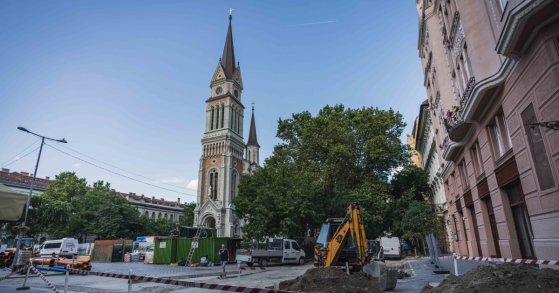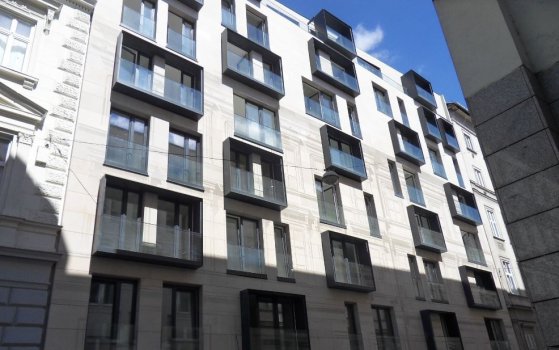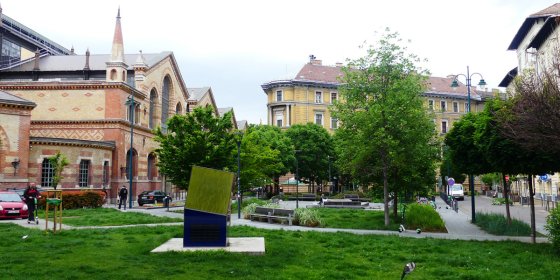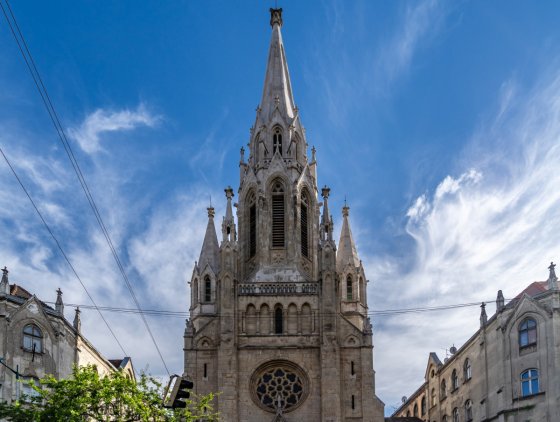 The „intertwined history” of the bridges and the city of Budapest
Which ideas and events have shaped the fate of bridges of Budapest and the cityscape? Alongside many other interesting facts, this question is also answered this newly published book by the Budapest City Archives, which introduces the history of bridges in Budapest.
The „intertwined history” of the bridges and the city of Budapest
Which ideas and events have shaped the fate of bridges of Budapest and the cityscape? Alongside many other interesting facts, this question is also answered this newly published book by the Budapest City Archives, which introduces the history of bridges in Budapest.
Ferencváros
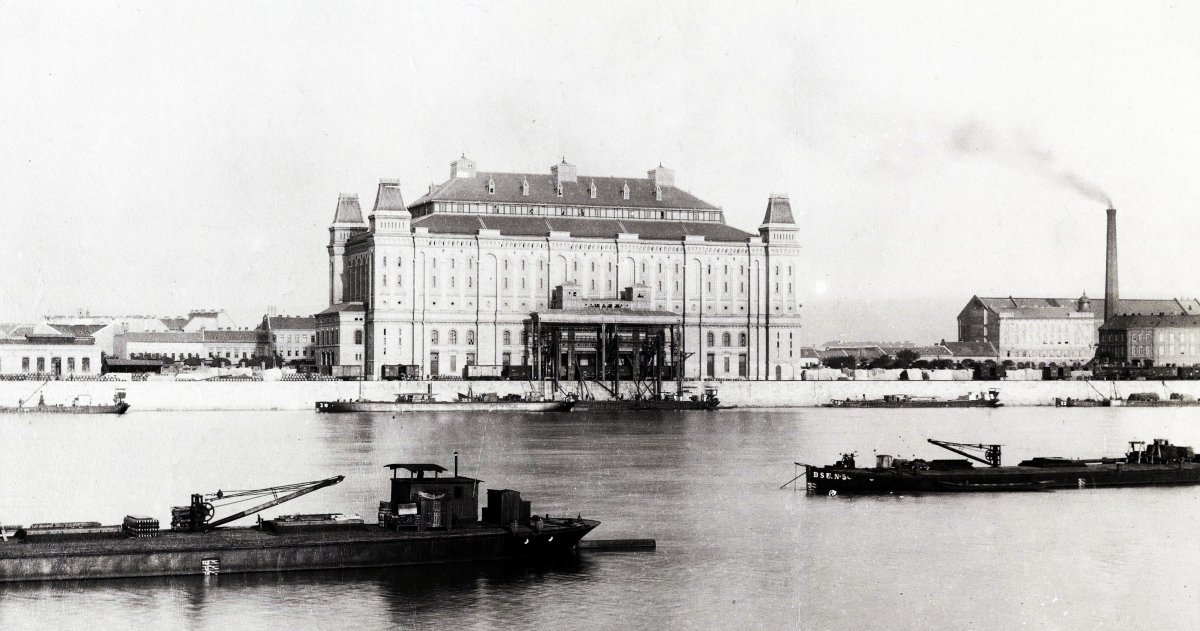 The afterlife of a grain warehouse - The 140-year-old Elevator House on Boráros Square was a real sight
The afterlife of a grain warehouse - The 140-year-old Elevator House on Boráros Square was a real sight
March 7, 2023 at 3:00 PM
From the 1870s, huge construction works were carried out in Budapest, which was developing into a metropolis. Of course, the Hungarian capital, as the country's economic, commercial and industrial centre not only grew at an ever-accelerating rate in terms of its residential and public buildings, but its industrial sites also multiplied, and their sizes occupied an ever-larger area. An important logistics centre was established close to the southern connecting railway bridge.
The story of the preservation of a factory building in Ferencváros
February 26, 2023 at 4:00 PM
The Laboratory Equipment Factory, completed in January 1963 at the corner of Tűzoltó Street and Thaly Kálmán Street, defined the streetscape of the neighbourhood for decades. Even when hundreds of workers worked in the building with a huge floor area, and even when it stood empty after 1990 and its condition deteriorated year by year. Nowadays, a modern dormitory, mainly inhabited by foreign university students, operates behind the walls, the new function also meant the rebirth of the building.
The house on József Boulevard, where Feri Neumann became Ferenc Molnár
January 20, 2023 at 10:00 AM
Ferenc Molnár, who was born 145 years ago this January, is one of the most well-known and beloved figures in Hungarian literary history abroad. Pestbuda also wrote about him several times in connection with his novels, dramas and connections to the capital. The writer's own life was also like a novel, full of twists and turns, successes and failures. The house on József Boulevard, which was built by his father and where he lived for the longest time in the capital, was the most important symbol of permanence.
A special place in Ferencváros - the Unitarian Mission House opened 100 years ago in Hőgyes Endre Street
January 12, 2023 at 1:17 PM
A small street opens onto Üllői Road, which bears the name of medical professor Endre Hőgyes, the founder of the Pasteur Institute in Budapest. Not by chance, as this institute once operated here. There is another interesting building on the street, which is known to those belonging to the Unitarian religious denomination, but the majority of the townspeople may not have heard of it. The house is really special, as it is both a residential building and a church.
The Bulgarian Cultural and Education Centre in Ferencváros held a topping-out ceremony on Epiphany Day
January 6, 2023 at 8:30 PM
The Bulgarian Cultural and Education Centre is to be built on the plot opposite the Bulgarian community centre in the 9th District, near the Orthodox church. The building's topping-out ceremony was held on Epiphany Day, 6 January, which coincides with the Orthodox Christmas Day.
The oldest building in Ferencváros stands on Kálvin Square - The story of the former Két Oroszlán Inn
December 13, 2022 at 11:00 AM
The house at 9 Kálvin Square is the oldest building not only on the square but also in the capital's 9th District that is still standing today. In the past two centuries, it has been through many things, it has been used for many things, but the most important thing is that it was used and this not very large, but cultural-historically significant building of Pest classicist architecture has survived.
The foundation stone of the new building of the specialist clinic in Ferencváros was laid
December 2, 2022 at 3:30 PM
The foundation stone of the new building of the health clinic in the 9th District, Mester Street, was laid. The institution's existing building will be expanded with a 6-story, 3,000-square-metre wing. The building will be built using the most modern technology, will have a green roof, and will be heated by a heat pump. The new building is planned to be completed in the spring of 2024.
A 110-year-old school building in Ferencváros - one of Albert Kálmán Kőrössy's masterpieces
December 1, 2022 at 9:00 AM
One of the large-scale masterpieces of Art Nouveau school architecture is bounded by three streets, Lenhossék, Vendel and Balázs Béla. Its main facade is so huge that people have to walk at least 50 metres away from it to admire its beauty. When it was completed, it stood out among the single-story houses in central Ferencváros. Nowadays, it is mostly surrounded by modern residential buildings, and perhaps there would be a residential building in its place too if it had not been given a new function a few years ago.
Conversion of the former BÁV headquarters will be postponed
November 16, 2022 at 5:00 PM
According to previous plans, the Károli Gáspár University of the Reformed Church would move into the former Central Pawnbroker Offices monument building on the corner of Kinizsi and Lónyay Streets in the 9th District. However, the public procurement procedure announced in the spring was declared ineffective due to a lack of funds.
An exhibition was opened on the 150th anniversary of the construction of the Honvédmenház
October 17, 2022 at 7:30 PM
150 years ago, in the fall of 1872, on Soroksári Road in the 9th District, the nursing home built for the elderly disabled and destitute soldiers who took part in the 1848-49 revolution and war of independence was opened. Its task was to provide and care for veteran soldiers. The last veteran died in the building, designed by Ödön Lechner and Gyula Pártos, in 1928. An exhibition about the regiment of Lajos Kossuth has just opened in the Ferencváros Local History Collection.
The Bakáts Square Church designed by Miklós Ybl has been completed
October 5, 2022 at 6:30 PM
The renovation of the Bakáts Square Church in Ferencváros has been completed. With the expansion of the crypt, a new urn burial section was created, the church received a new floor covering, the plaster was restored and restoration work was carried out. The new altar was also consecrated at the weekend.
The burned-down but now rebuilt dormitory on Ráday Street was handed over
October 2, 2022 at 3:00 PM
In 2019, the Reformed dormitory in the 9th District, on the plot of the Dunamellék Reformed Church District bordered by Ráday Street, Köztelek Street, Markusovszky Square, and Biblia Street, burned down under tragic circumstances. In its place, on the side facing Markusovszky Square, the new dormitory wing has now been completed, but in addition, the central building bordered by Ráday Street and Köztelek Street, acquired in 1912, has also been completely remodelled. In the renewed headquarters building, the bishop's office can be found at 28 Ráday Street and the Faculty of Theology of the Károli Gáspár University of the Reformed Church can be approached from Köztelek Street.
Design renders of the Ecseri Road metro station and its surroundings
September 7, 2022 at 2:00 PM
The winning tender was selected, based on which the Ecseri Road metro station and its surroundings will be renovated. The design renders show that there will be pavilions with glass walls and new plants. The surface arrangement of the metro station is expected to begin in the spring of 2023.
110-year-old jewel-box in Bokréta Street - Home of a car manufacturing dynasty
September 3, 2022 at 2:30 PM
On the corner of Tűzoltó Street and Bokréta Street in Ferencváros, there is an eye-catching residential building. Passers-by often stop to take a closer look at its building ceramics, its carefully and artistically carved gate or the small corner tower that decorates its dome. The house was once the home of the internationally famous Zupka carriage manufacturer and then vehicle body builder family, and it was built right next to the factory in 1912. On the site of the assembly plant, a modern residential building stands in Tűzoltó Street, but the former family home designed by the architect János Bach has fortunately been preserved for posterity.
In the footsteps of an antiquity in Ferencváros - the first church on Bakáts Square was built 200 years ago
August 17, 2022 at 10:18 AM
The Bakáts Square church is one of Miklós Ybl's early masterpieces, which since 1879 has not only been the most important building in the square, but also a symbol of Ferencváros. We have been admiring its renovated exterior for years, and the reconstruction of the interior spaces will be completed in the foreseeable future. Probably only a few people know that the church has been operating since 1822 on the 9th District's best-known square. It was built 200 years ago in such a way that both the commissioner and the users knew that it would only serve the Catholic population of the area until it was replaced by a permanent church. Although the "exchange" was not without difficulties, until 1865 it was the centre of faith for the Catholics of "Franzstadt".
In memory of Marhavágóhíd - one of the capital's meat industry centres was completed 150 years ago
June 30, 2022 at 9:00 AM
When it was completed, it was considered one of the capital's architectural attractions. Many citizens of Buda and Pest, and even visitors from the countryside or abroad, were curious to see what the complex of buildings looked like, which became one of the defining institutions of public food supply from 1872 and remained so for almost 100 years.
The building of Semmelweis University in Ferenc square is being renovated
May 31, 2022 at 5:30 PM
As part of the Healthy Budapest Program, the building of Semmelweis University in Ferenc Square will be expanded and renovated. During the investment, the historicist-style educational building in Ferencváros will be enriched with an elevator.
The Reformed University is moving into the former BÁV headquarters
April 13, 2022 at 5:00 PM
The Károli Gáspár Reformed University is moving into the former BÁV headquarters in Ferencváros. According to the idea, the Faculty of Law and Political Science of the University, the Institute of Psychology and the Rector's Office would serve as the new home of the 11th district historic building. The goal is to develop the university and create a modern educational environment.
Markusovszky Square in Ferencváros can be renewed
February 17, 2022 at 3:30 PM
With resting benches, a new playground and a dog runner you can renew district Markusovszky Square, under which a 120-space underground garage can be built, but fifty trees will also be planted in the area, where the green area will also be increased. A comprehensive concept plan has been prepared for the development of the 9,000-square-meter space, and the visual plans are shown.
Crowded homes, high mortality: the people of Pest did not have an easy life 150 years ago
February 16, 2022 at 10:00 AM
Today, we cannot imagine the misery of the people of Pest in certain parts of the city before the unification of the city. Nor was it rare, according to statistics from 150 years ago, for several families to live in a single room. Those living in a room crowded with 6 to 10 people died sooner, and the average life expectancy, even in the best parts of downtown, was less than 26 years. PestBuda's article reveals that the misery was great, especially in Ferencváros and Józsefváros, but the situation did not improve in the other districts of the capital for a long time.
Where there used to be a barracks, there is now a sports hall - The history of the Franz Joseph infantry barracks
January 20, 2022 at 9:00 AM
Opposite Népliget stood a military object for more than a hundred years, the sight of which largely determined the intersection of Üllői Road and Könyves Kálmán Boulevard. Today it is replaced by a huge handball hall, which is currently hosting the first international sporting event. The history of the new building is still very short, but it offers a good opportunity to get to know the old one.
The past of Nagyvásártelep - The food trade centre of the capital was built ninety years ago
January 6, 2022 at 9:00 AM
When the Central Market Hall in Fővám Square was handed over in 1897, the leaders of the city believed that the process of food industry development and freight transport, which had been going on for decades at the time, had come to an end. Steam mills, slaughterhouses and meat plants were lined up along Soroksári Road, and the needs of retailers and wholesalers were fully met with the establishment of the Danube Coast Freight Station and the construction of public warehouses between the Southern Railway Link Bridge and Fővám Square. However, it soon became clear that this was far from the case, and there was an urgent need to ensure the daily flow of goods through a wholesale market.
Sweet life in happy times of peace - The Stühmer Factory from foundation to nationalisation
November 29, 2021 at 11:30 AM
Tibi chocolate, Ropp wafer and Zizi dragee. Generations have known and loved the popular products of the Stühmer Chocolate Factory. How did Frigyes Stühmer create Hungary's first and largest chocolate factory in Józsefváros during the Compromise-period and why did the factory have to move to the neighbouring Ferencváros? The factory was nationalised after World War II, and descendants who moved to Canada tried unsuccessfully to reclaim it in the 1990s, yet the brand name, founded more than 150 years ago, has not been forgotten.
The Church of Saint Vincent de Paul in Ferencváros was consecrated 85 years ago
November 20, 2021 at 11:00 AM
A fine example of historicist architecture is the Church of Saint Vincent de Paul at the intersection of Mester Street and Haller Street in Ferencváros, which was consecrated in 1936, 85 years ago. Its creator was Gáspár Fábián, who, as one of the most outstanding architects of his time, designed about fifty church buildings. The carved sandstone building, modelled on Romanesque churches in northern Italy, can accommodate up to 2,000 people. From the top of the 55-metre tower, an amazing panorama is a delight for those climbing the staircase.
BKV will also be part of the Budapest100 programme
September 9, 2021 at 3:00 PM
This year, BKV is also joining the Budapest100 programme: the company's headquarters in Erzsébetváros and the Ferenc Electricity Converter can be seen the second weekend of September by the curious.
What will Bakáts Square look like?
August 12, 2021 at 4:00 PM
The renovation of Bakáts Square in Ferencváros has been on the agenda for a long time, so we are very curious to see what this cozy area, surrounded by old trees, will look like. According to the district local government, there is no need to wait long for an answer, because the works will be completed by December. The green spaces, pavements and street furniture will be renewed, strengthening the city park function of the square. However, parking will be restricted, car traffic will only be allowed on the longer sides of the square.
New residential building completed on Erkel Street 5 years after the demolition of the classicist building
August 3, 2021 at 12:00 PM
Although during urban development it is often the case that some of the old buildings are demolished and replaced by new ones, it is very painful to lose a value that is unique or rare and to replace it with a building which has not got the same values, in addition, the more or less uniform street view is sacrificed as well. The new residential building was completed five years after the demolition of the classicist residential building at 18 Erkel Street in the 9th district. Pestbuda now shows the readers what it turned out to be.
The Saint Emeric Dormitory in Pest not only provided housing but also raised students
July 28, 2021 at 11:30 AM
At the turn of the century, Saint Emeric's Dormitory was established on a private initiative to alleviate the housing problems of Catholic students and college students, which later developed into a national network. The dormitory operated first in Irányi Street and then on Üllői Road. The Saint Emeric Dormitory in Pest finally found a permanent home under 43-45 Ráday Street in Ferencváros. The renowned dorm suffered from the period of the Hungarian Soviet Republic, but its nearly half-century-old history ended with the turn of the post-World War II era. The building still houses a dormitory.
Vendors once sold their goods on Csarnok Square in Ferencváros, where shoppers and tourists now relax
May 26, 2021 at 9:00 AM
Although Csarnok (Market Hall) Square in Ferencváros did not exist before 1896, after the opening of the Central Market Hall, a busy life began on the 9th District's smallest, but all the more special square, where hundreds of graves were unearthed during a 2016 hotel construction, highlighting a small detail of the area's vibrant past.
Neo-Gothic wonder on Üllői Road – Church in Ferencváros designed by Sándor Aigner
May 10, 2021 at 9:00 AM
A large number of architects played a huge role in making Budapest a metropolis. They created numerous beautiful plans between the 1870s and 1910s. Many of our public buildings and dwellings that still stand are the fruits of their work. While this view is generally accepted, the names of several masters have almost been forgotten. Such is the case of Sándor Aigner, who designed many churches as a master of Gothic Revival architecture. His most important work is the Perpetual Adoration Church in Ferencváros.
More articles
 The „intertwined history” of the bridges and the city of Budapest
Which ideas and events have shaped the fate of bridges of Budapest and the cityscape? Alongside many other interesting facts, this question is also answered this newly published book by the Budapest City Archives, which introduces the history of bridges in Budapest.
The „intertwined history” of the bridges and the city of Budapest
Which ideas and events have shaped the fate of bridges of Budapest and the cityscape? Alongside many other interesting facts, this question is also answered this newly published book by the Budapest City Archives, which introduces the history of bridges in Budapest.
 The Bridge Report, which brought a turning point in the history of Budapest
A travel report that changed the history of Pest and Buda, as well as Hungary. The little book contributed to the change of half a thousand years of legal customs and the implementation of an investment of unprecedented size and technical quality. This book was The Bridge Report [Hídjelentés in Hungarian].
The Bridge Report, which brought a turning point in the history of Budapest
A travel report that changed the history of Pest and Buda, as well as Hungary. The little book contributed to the change of half a thousand years of legal customs and the implementation of an investment of unprecedented size and technical quality. This book was The Bridge Report [Hídjelentés in Hungarian].
 Drama on the university wall - The heroic monument was planned 95 years ago
In the constant hustle and bustle of the Egyetem Square in Pest, the students may not even notice the monument that decorates the short section of wall between the church and the central building of ELTE. However, it commemorates their predecessors, the heroes who fought for their country in World War I, and those who heroically helped them. The first design of the dramatically collapsing soldier was born in 1928, ninety-five years ago.
Drama on the university wall - The heroic monument was planned 95 years ago
In the constant hustle and bustle of the Egyetem Square in Pest, the students may not even notice the monument that decorates the short section of wall between the church and the central building of ELTE. However, it commemorates their predecessors, the heroes who fought for their country in World War I, and those who heroically helped them. The first design of the dramatically collapsing soldier was born in 1928, ninety-five years ago.


